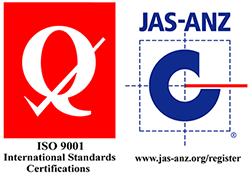Industries we have served

Eddy current testing
Home » NDT Services » Eddy current testing
Eddy current (ET) testing method is based on applying an alternative current (AC) around the specimen by using a coil. Inducted current (so called Eddy current) is generated close to the surface of the specimen (Fig. 7). Monitoring the Eddy current by a sensitive galvanometer flaws and other discontinuities in the specimen can be detected. ET method can be used for verification of metallic tubular components of civil engineering equipments.
Eddy current is an electrical current having circular path induced in a conductor by a coil carrying an alternating current (AC). Thus eddy current testing (ET) is an NDT method that utilizes the interaction between eddy current and discontinuity. When alternating current flows through a coil, a magnetic field (Hp) will be produced whose direction will also change with time. If this coil is positioned close to a conductor, the magnetic field will continuously ‘cut’ the conductor, producing eddy current, which is also alternating in nature, whose plane is parallel with the plane of the coil.
Alternating eddy current in turn, will produce a secondary magnetic field (Hs) which is always in opposite direction with the primary magnetic field. Thus, the resultant magnetic field is Hp – Hs. When there is a discontinuity that obstructs the eddy current path, it will alter the value of Hs and consequently will affect the resultant magnetic field. Changes in resultant magnetic field will cause changes in current, voltage and impedance of the circuit. In this way anything that affect secondary magnetic field (Hs) would be detected. Parameters that affect Hs include conductivity, permeability, heat treatment, and the presence of surface and subsurface discontinuity.
Several types of eddy current probes are available for generation of eddy current. The most common probe refers to as pencil probe, which is used for generating eddy current in a flat surface.
Such probes are useful for detecting cracks in components having a flat surface such as turbine, plate, etc. Internal and external probes on the other hand are used to generate eddy current for the inspection of hollow tubes and solid cylinder respectively.
Eddy current density and phase change with distance from the surface of material. Such behavior can be capitalized to measure the depth of discontinuity from the surface. In tube inspection, by carefully analyzing the phase angle of eddy current signals and compare it with eddy signals obtained from a series of hole with different depth in a calibration tube, one would be able to estimate the amount of wall loss experienced by the tube.
Advantages and limitation of eddy current methods are as follows:
Advantages
- The results can be obtained instantaneously
- The inspection system can easily be automated
- It is non contact method
- Equipment are portable and suitable for field application
- Some equipment are made dedicated for specific measurement (e.g., conductivity, crack depth, etc)
Limitations
- Applicable only to conducting materials
- If it is to be used for ferromagnetic material, the item must be magnetically saturated to minimize effect from permeability
- Require highly skillful and experienced operator
- Applicable only for the detection of surface and subsurface discontinuity





